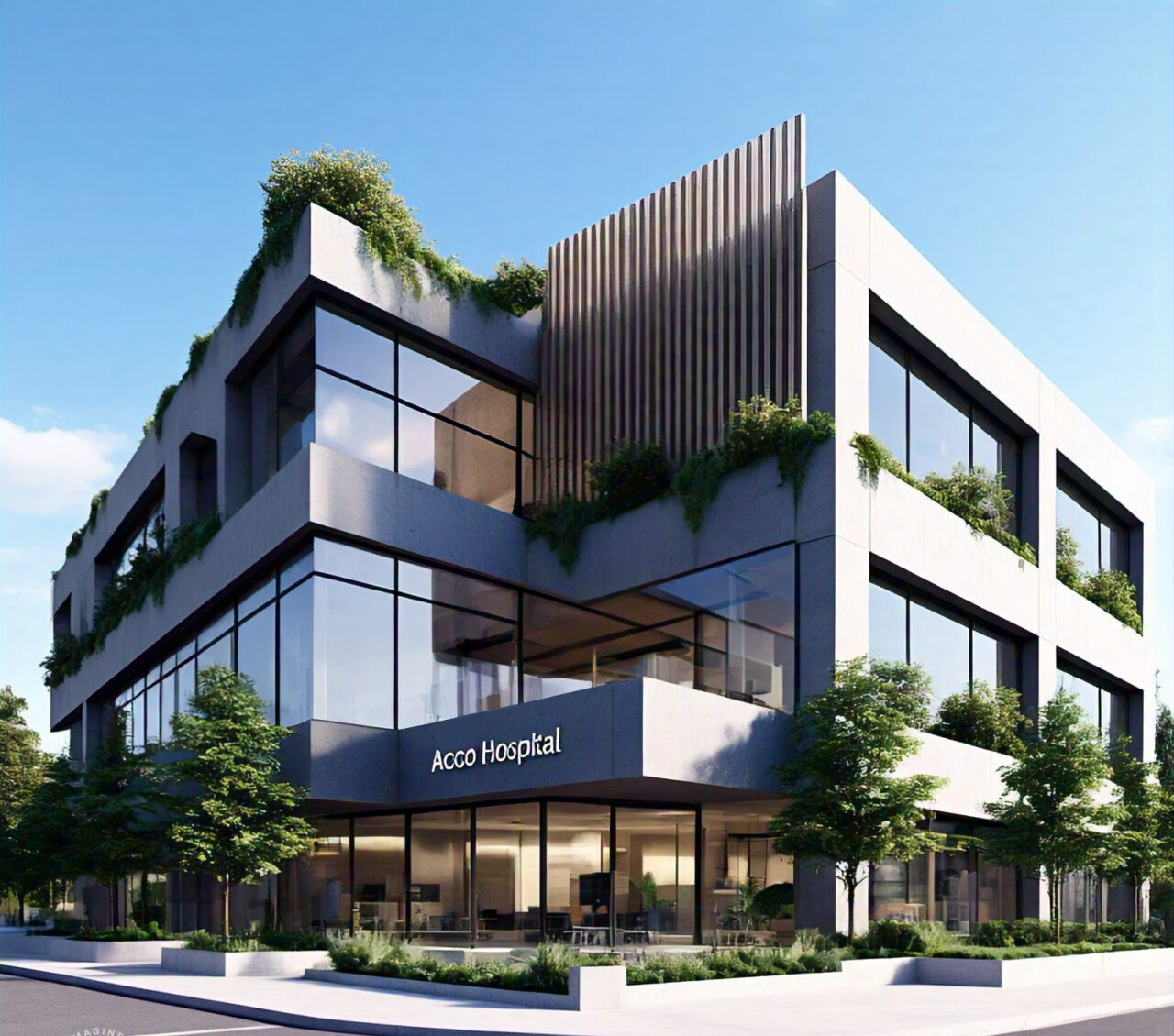
Best Hospital and Healthcare Architects in Pakistan
Healthcare architecture plays a critical role in the overall healthcare system, particularly in countries like Pakistan where the healthcare infrastructure is evolving rapidly. In today’s world, hospital design is no longer just about creating spaces for treating illnesses. Instead, modern hospital and healthcare architects focus on building environments that promote healing, enhance patient experience, and ensure operational efficiency. Pakistan’s healthcare architecture landscape has seen impressive growth, with several firms leading the charge in developing state-of-the-art hospitals, clinics, and healthcare facilities.
This article will delve into some of the best hospital and healthcare architects in Pakistan, who are reshaping the country’s healthcare sector through innovative design, sustainability practices, and patient-centered approaches.
1. The Importance of Healthcare Architecture in Pakistan
In Pakistan, access to quality healthcare is a significant concern. The design and structure of hospitals play a crucial role in determining how well healthcare services are delivered. Well-planned hospitals not only ensure better workflow for medical staff but also provide patients with a comfortable and healing environment. With rising demand for modern healthcare facilities, there’s an increasing focus on employing the best healthcare architects who understand the local context and international standards.
Factors such as patient safety, infection control, efficient use of space, and environmental sustainability are key considerations for healthcare architecture in Pakistan.
2. Key Trends Shaping Healthcare Architecture in Pakistan
Before diving into the best hospital architects, it’s important to understand the trends driving healthcare architecture in Pakistan:
- Sustainability and Green Building: Increasing focus on eco-friendly hospitals to reduce carbon footprints and operational costs.
- Technology Integration: Incorporating smart technologies such as telemedicine infrastructure and digital health records.
- Patient-Centered Design: Hospitals are being designed with a focus on enhancing patient experience, such as improving privacy, comfort, and accessibility.
- Flexibility and Adaptability: Designing hospitals that can quickly adapt to evolving healthcare demands, especially in the wake of crises like the COVID-19 pandemic.
These trends are shaping how hospitals and healthcare facilities are being designed and built, pushing hospital architects to innovate continually.
3. Top Hospital and Healthcare Architects in Pakistan
Let’s explore some of the leading architectural firms in Pakistan known for their contributions to the healthcare sector:
A. Arcop Associates
Arcop Associates is one of the most renowned architecture firms in Pakistan, known for its innovative approach to hospital design. The firm has worked on numerous projects, delivering state-of-the-art hospitals that focus on both functionality and aesthetic appeal.
Key projects include:
- Shaukat Khanum Memorial Cancer Hospital (Karachi branch)
- Shifa International Hospital (Islamabad)
Arcop Associates incorporates patient-centered design in its projects, ensuring that hospitals offer a healing environment while optimizing medical workflows.
B. Arshad Shahid Abdulla (ASA) Architects
ASA Architects is a household name in Pakistan’s architectural landscape. The firm has completed multiple healthcare projects, focusing on sustainable design principles. Their work ensures that hospitals are energy-efficient and cost-effective in the long run.
Notable projects:
- Aga Khan University Hospital (Karachi)
- Tabba Heart Institute
ASA is known for its holistic design philosophy, integrating functionality, aesthetics, and sustainability in every project.
C. Jafferjees Architects
Jafferjees Architects specializes in healthcare architecture, focusing on creating efficient and flexible spaces for hospitals. The firm is well-versed in the latest technologies and healthcare needs, designing hospitals that can adapt to future medical trends.
Projects include:
- Bahria Town International Hospital (Lahore)
- Indus Hospital (Karachi)
Their emphasis is on designing hospitals that balance medical functionality with patient comfort, creating spaces that cater to both healthcare providers and patients.
D. Sadequain and Partners
Sadequain and Partners have made a significant mark in Pakistan’s healthcare sector. The firm takes an innovative approach to hospital master planning and design. With an emphasis on environmental sustainability, their projects include several green hospitals designed to reduce energy consumption and operational costs.
Major projects:
- Sheikh Zayed Hospital (Lahore)
- Kohat Medical Complex
E. Habib Fida Ali Architects
One of the pioneering architects in Pakistan, Habib Fida Ali Architects has delivered exceptional projects across various sectors, including healthcare. The firm’s attention to detail and design philosophy ensure that healthcare facilities meet both international standards and local needs.
Notable projects:
- Liaquat National Hospital (Karachi)
- South City Hospital
4. Sustainability in Healthcare Architecture
In recent years, sustainability has become a key concern in healthcare architecture, and the leading firms in Pakistan are no exception. The push towards green buildings in the healthcare sector is being driven by the need to minimize the environmental impact of hospitals, reduce energy consumption, and create healthier spaces for patients.
Key Sustainability Practices Include:
- Energy-efficient designs: Incorporating natural light, ventilation, and energy-saving technologies to reduce operational costs.
- Water conservation: Using rainwater harvesting and recycling systems in hospital design.
- Waste management systems: Ensuring proper disposal and management of medical waste in environmentally safe ways.
5. Technology and Innovation in Healthcare Design
Technology is another critical factor shaping healthcare architecture. The integration of smart hospital technologies, such as automated systems for managing patient flow, telemedicine, and digital health records, is rapidly transforming hospital designs.
Architects are now incorporating:
- Telemedicine infrastructure: To ensure that hospitals are equipped for remote consultations and care.
- Modular designs: That allow hospitals to expand or reconfigure their spaces as needs change.
- Automation in hospital management: Including automated lighting, temperature control, and even robotic surgery units.
6. Patient-Centered Healthcare Design
One of the most significant shifts in healthcare design is the emphasis on patient-centered care. Hospitals are no longer just spaces for treating illnesses; they are environments designed to promote healing and well-being.
Important Features of Patient-Centered Design:
- Privacy: Ensuring that patients have private rooms and spaces where they feel comfortable.
- Comfort: Designing hospitals with spacious waiting areas, comfortable rooms, and access to nature and outdoor spaces.
- Accessibility: Making sure that hospital designs cater to all, including individuals with disabilities.
7. Challenges in Healthcare Architecture in Pakistan
Despite the progress being made in hospital and healthcare design, architects in Pakistan face several challenges:
- Budget constraints: Many healthcare facilities, especially in rural areas, have limited funding, which affects the quality of hospital design.
- Urban vs. rural healthcare divide: Most modern healthcare facilities are concentrated in urban areas, leaving rural populations underserved.
- Regulatory issues: Navigating Pakistan’s regulatory landscape can be challenging, particularly when it comes to meeting international healthcare standards.
8. Role of Public-Private Partnerships in Healthcare Infrastructure
Public-private partnerships (PPPs) are playing a crucial role in the development of healthcare infrastructure in Pakistan. By collaborating with private firms, the government can leverage private sector expertise to deliver world-class hospitals, especially in underserved areas.
Architectural firms often work with both public and private healthcare providers to design facilities that meet the needs of a growing population while adhering to budget and regulatory requirements.
9. The Future of Healthcare Architecture in Pakistan
The future of healthcare architecture in Pakistan looks promising. With the increasing demand for modern healthcare facilities, the best hospital architects are focusing on creating flexible, adaptable, and sustainable designs. As the country’s healthcare infrastructure continues to evolve, innovation in design and technology will be key in delivering world-class hospitals and healthcare centers.
Architects are also increasingly looking towards international collaborations to bring the latest global trends and technologies into Pakistan’s healthcare sector, ensuring that the country stays at the forefront of healthcare innovation.
10. Conclusion
In conclusion, the best hospital and healthcare architects in Pakistan are transforming the nation’s healthcare landscape by combining modern design principles with cutting-edge technology and sustainability practices. Firms like Arcop Associates, ASA Architects, Jafferjees Architects, and others are leading the charge, creating healthcare facilities that meet international standards while addressing local needs. As Pakistan continues to develop its healthcare infrastructure, the role of architects in shaping hospitals that are efficient, sustainable, and patient-centered cannot be overstated.
Pakistan’s healthcare architecture is evolving rapidly, and the future holds exciting possibilities for both healthcare professionals and patients alike.




